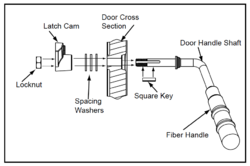I clean my chimney twice a season. I just cleaned it today with the Gardus Soot eater rotary system, removing what was deposited from mid season to spring. About three months worth of burning 4 hrs per night. I got about two three pound coffee cans worth of fluffy soot. I burn dry wood and as you know at the high heat setting. I run three foot long extensions up the chimney until it ends at the cap. At that time, I reverse the direction on the drill and begin the downward trek. I would love only getting a one three pound coffee can full of soot after a year, but I wind up with about four of those. As long as I was at it, I also replaced the ceramic blanket with a new one. I also discovered that I also need new bottom firebrick as some of them are crumbling.........that, and I discovered that my gasket at the top does not meet the dollar test. It does on the sides, but not the top. My insert is on a level which is at ground level, a level which we spend the most time and gets very cold. My dogs love the heat and bark at me when I get home, wanting a fire to lay beside. They crack me up sitting by the fireplace barking, waiting for heat. When they see me hauling wood in from outside they begin to whine and know what is in store for them. I have to shoo them away at first, when I am building the fire, but after it is going good, they settle in in front of it. I will take your advice and burn slower and see how it goes. I may just have the worst setup for burning wood that can be, but I am stubborn and will not cave in. Dammit! I am going to burn wood! Thank you pal for your input!


